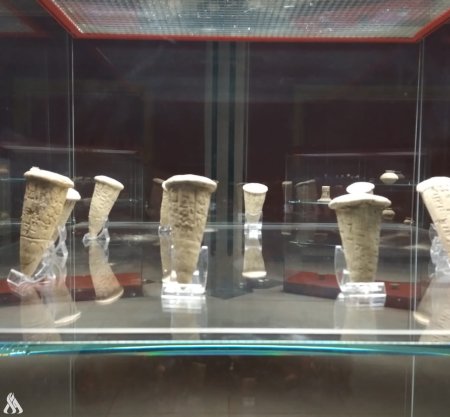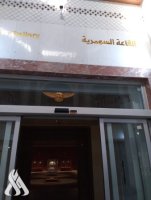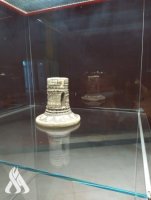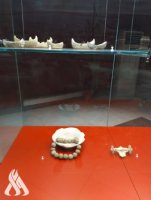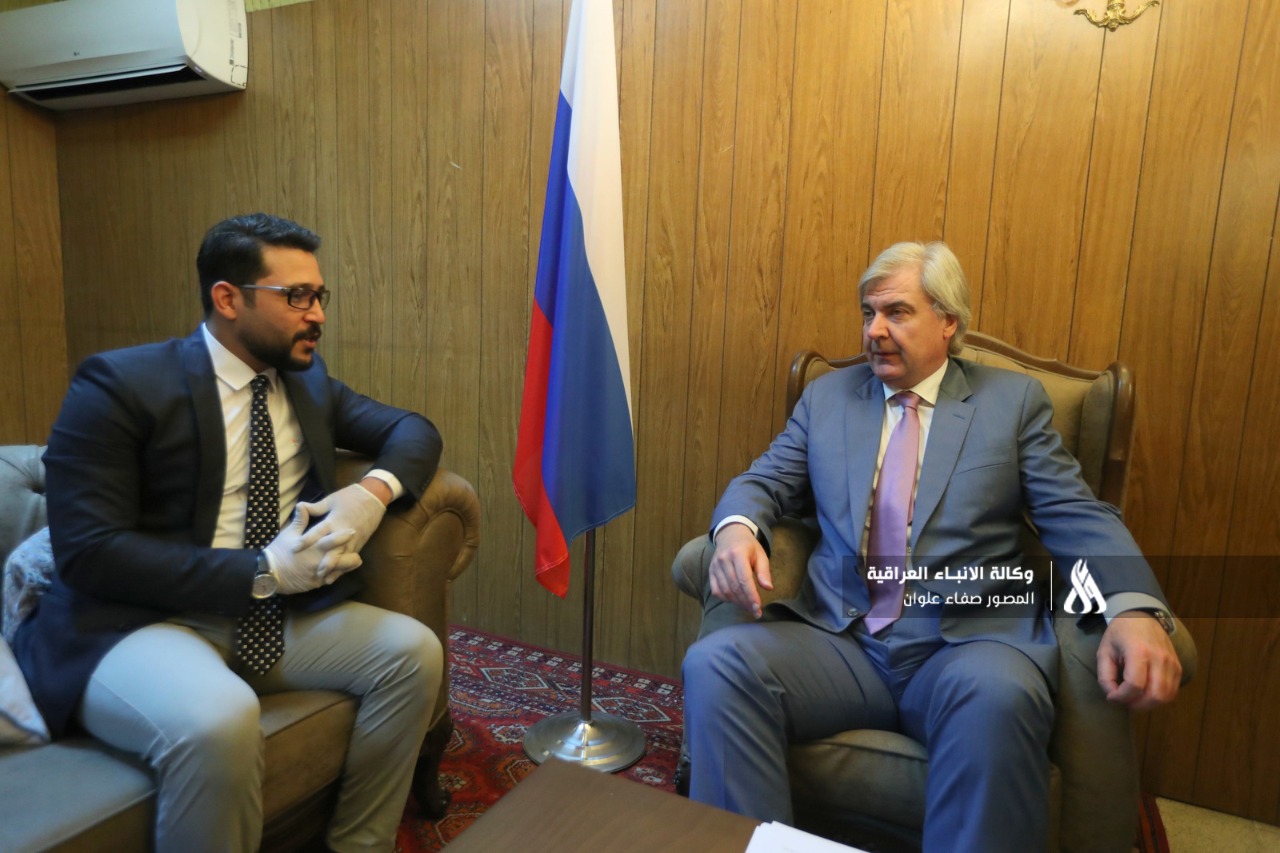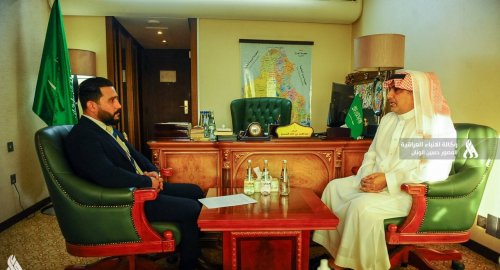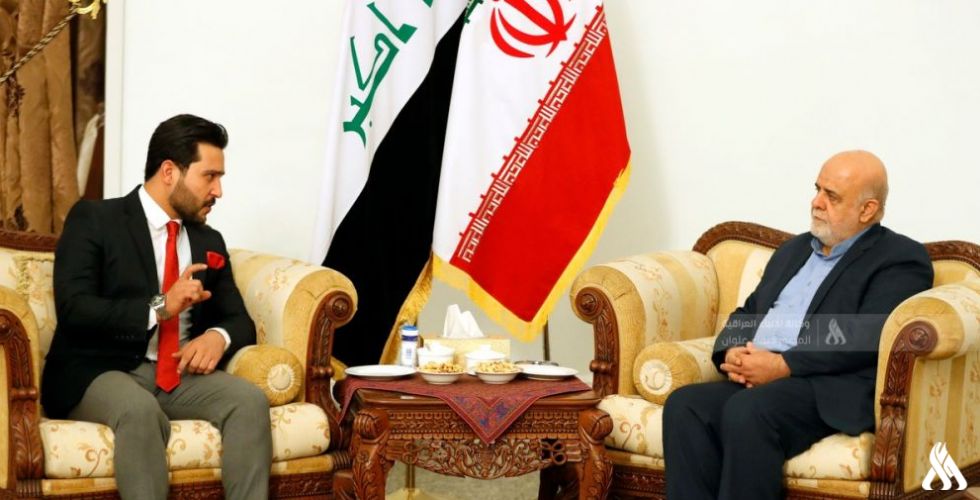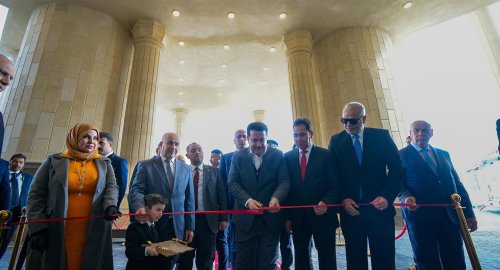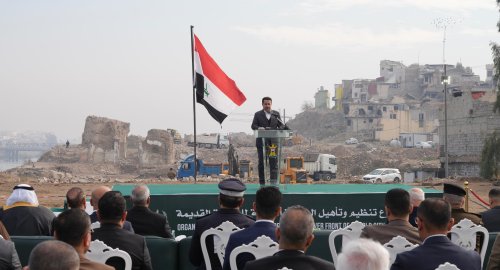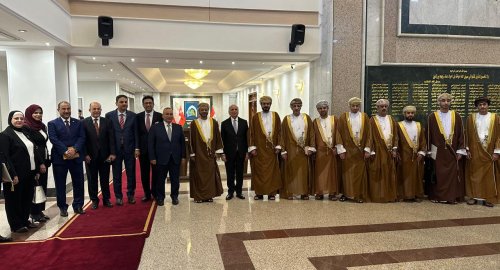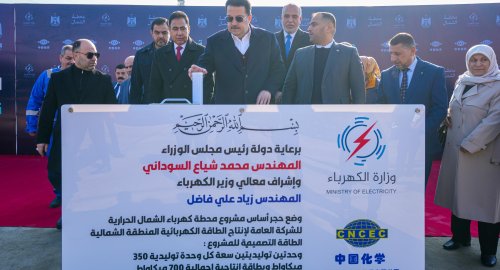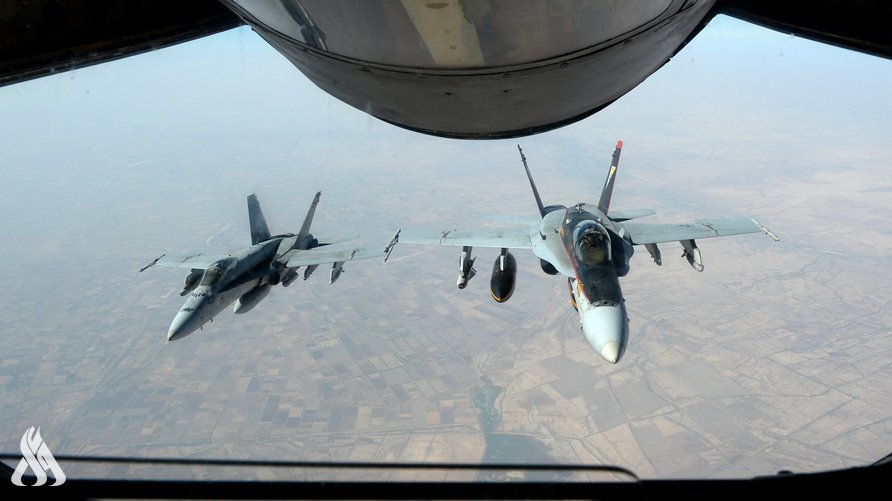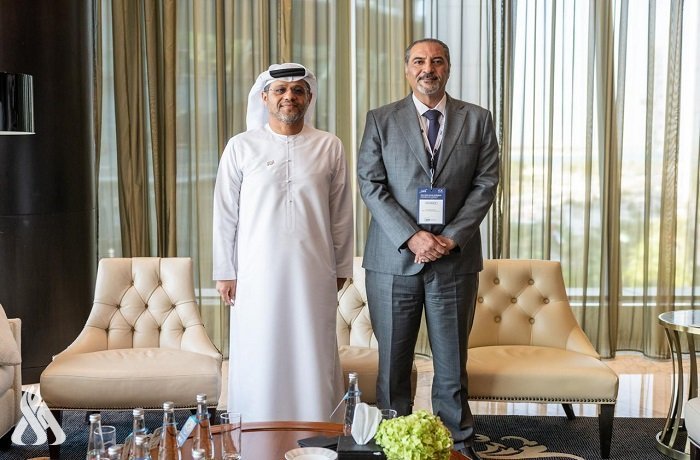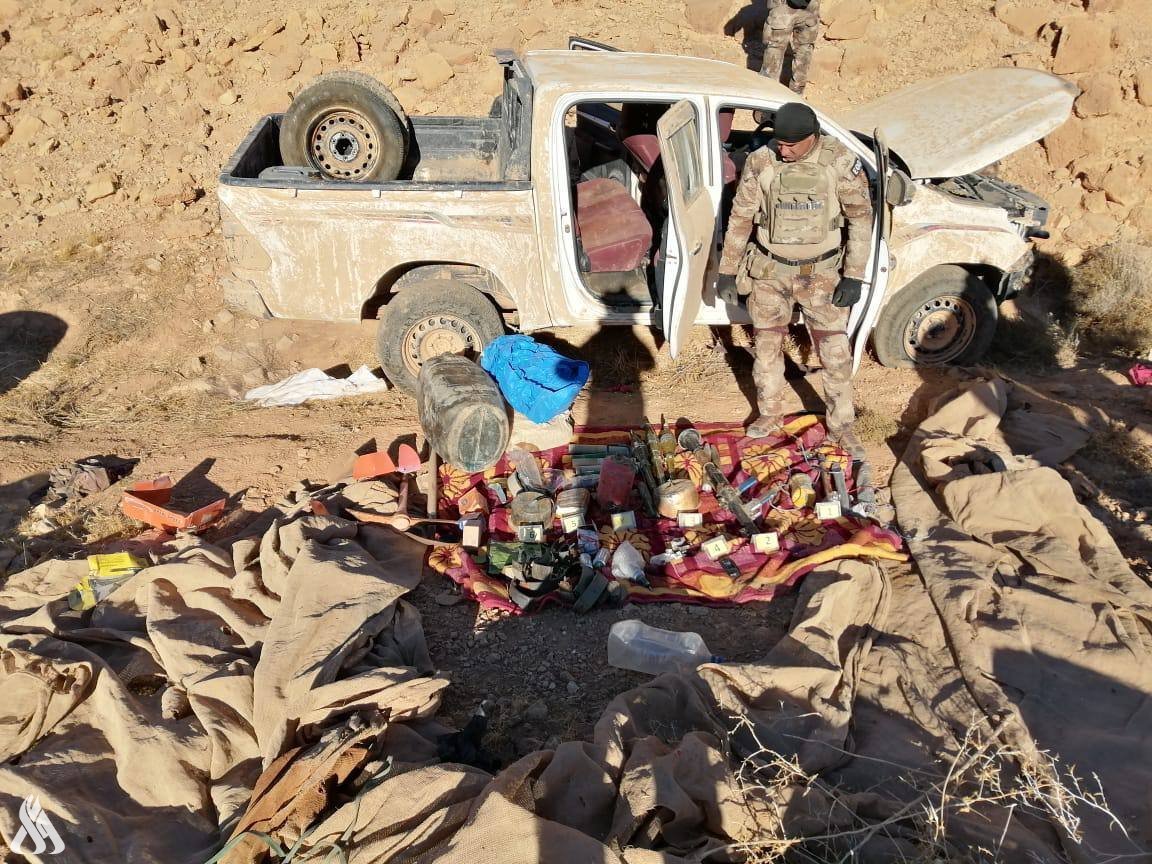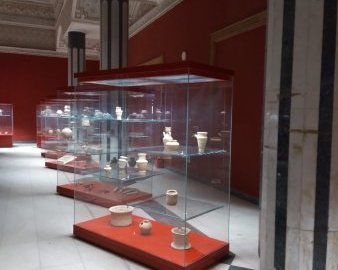
Basra Museum..An archaeological wealth dating back to pre-Islamic times

Culture and art
- 3-12-2021, 22:59
Basra - INA - Saba Sami
The Basra Civilization Museum, formerly known as the (National Museum) occupies a privileged location in the city opposite Shatt al-Arab (Basra Corniche), where it was exposed, due to the conditions that the governorate experienced during the previous years, to destruction, looting and vandalism, which all led to the destruction of its landmarks.
However, the efforts of the concerned authorities in the museum, the Ministry of Culture, civil society organizations and the security services, rehabilitated this cultural edifice to become (Basra Civilization Museum) and it embraces in specialized halls the culture, history and antiquities of Iraq throughout the ages. The lack of financial allocations, the assistant governor of Basra for district and sub-district affairs, Sayed Arab Al-Jazaery, told the Iraqi News Agency (INA), that "the National Museum in Basra is a cultural interface, and as a result of the great importance it has in Basra and Shatt Al-Arab in particular, so its new location was chosen opposite Basra Corniche.
He added, "The wars and security conditions that Basra governorate witnessed previously, and the lack of financial allocations helped in the disappearance of its privacy, and despite its move to a new place, the reconstruction of the National Museum in its original place will be one of the first priorities for reconstruction in the Shatt al-Arab district, where it needs a large amount of financial liquidity to advance the tourist attractions.".

in Basra Governorate. Specialized halls, for his part, the administrative employee of the Basra Civilization Museum, where its new headquarters is, Haider Judeh, told the Iraqi News Agency (INA), that "the difficult security conditions that passed through the province caused the destruction, damage and loss of most of the artifacts in the (National Museum), but the efforts The ongoing efforts made by the Director of the Basra Antiquities Inspectorate, Qahtan Al-Obaidi, to establish the (Basra Civilization Museum), with the help of the museum’s friends, who are a group of non-governmental organizations, including the late Dr. Lamia Al-Kilani, who is one of the personalities contributing to the rehabilitation of the museum.
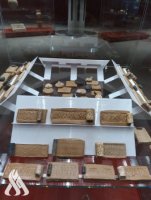
He added that "the museum was opened in its new headquarters on March 19, 2019, when its first establishment began with the visual hall and then developed to consist of four halls (the Babylonian hall, the Assyrian hall, the Sumerian hall, and the educational hall)", explaining that "the halls differ according to the ages and their effects, for example. Pre-Islamic eras, their archaeological pieces were different until the Islamic era, and then developed from pottery to ceramics, copperplates, inscriptions and Islamic writings, and all the existing antiquities were explored and extracted from archaeological sites in Iraq and according to the ages (Babylonian, Parthian, Sassanian and Sumerian). Antiquities and cuneiform paintings, and Gouda continued that "the details of the halls are as follows:
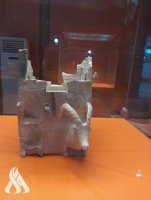
The visual hall
It includes two displays for displaying coins and their sequence since the pre-Islamic periods, i.e. the Parthian, the Sassanid, and then the Islamic eras, ending with the last sultans, for example Sultan Abdul Majeed Hamdan, the last sultans in the Islamic era), noting that “the method of displaying these coins is through (Fatrina) i.e. The coin is displayed in two faces.”
The Babylonian Hall
He continued that “this hall includes manuscripts of treaties and contracts of sale and purchase on the clay figure and seals in the time of the Babylonians,” noting that “these manuscripts are in the form of a cylinder, where the clay figure is stamped with a cylinder seal.” He stressed that they are "also includes ornaments that were worn by women at that time , namely , (lapis and crystalls, rubies and oysters)," pointing out that it "also includes statues of black tigers that were adorned palaces and buildings in the Babylonian era."
Sumerian Hall
Judeh indicated that "the antiquities that are found in this hall are among the oldest monuments when compared to the sequence of ages. The Sumerian era is the first and oldest of the ages." Handmade, as we find nails, that is, currently known as the modern path in the modern era and the path previously.
He pointed out that "the hall also includes pieces of pottery, and the clay figure contains inscriptions, which is the creation of writing, as it is one of the oldest writing in the Sumerian time and era, which is called (Sumerian writing)", noting that "it includes the means of hunting in the time of the Sumerians to hunt animals and their work. The seals are the same seals in the Babylonian era.
Assyrian Hall
He stated that "in the time of the Assyrians, writing developed as it was in the past, as the Assyrian hall contained most of the tools that were used from hammer, stone and stone axes, as well as copperplates, fortifications for decoration, copper bells, pottery and ornaments for women," noting that "these ornaments are the same in all Ages where they are made of onyx and lapis lazuli.
The educational hall
This hall is specialized in teaching children the art of Sumerian drawing and writing, developing children's talents, and informing them about matters of ancient heritage and the preservation of civilization and antiquities.
Regarding the reception of tourist delegations, Judeh pointed out that "receiving guests and tourists is according to the instructions of the Ministry, which stipulates that visitors receive according to the tariff, that is, the tariff of Iraqi visitors, and the fees for each Iraqi person are 3000 Iraqi dinars, while for Arab and foreign visitors, the fee is 25,000 Iraqi dinars, while the fees for each Iraqi person are 3000 Iraqi dinars.
The fee for students is of two types (from the first primary to the preparatory, and within a scientific school trip and with a letter from the school, the fee is 1000 Iraqi dinars per student). Sunday through Thursday every week.
Prime Minister inaugurates new Nineveh Governorate building
- politics
- 04:30
Al-Sudani launches construction of North Thermal Power Plant
- politics
- 12:03
US Central Command: We killed ISIS terrorist leader Abu Yusuf in Syria
- International
- 24/12/20
Liverpool compete with Real Madrid to sign Olympique Lyonnais star
- Security
- 24/12/19
ISC, ADX discuss Strengthening Economic Ties
- Economy
- 24/12/16
Iraq assumes presidency of Arab Investment Company’s Executive Board
- Economy
- 24/12/17
